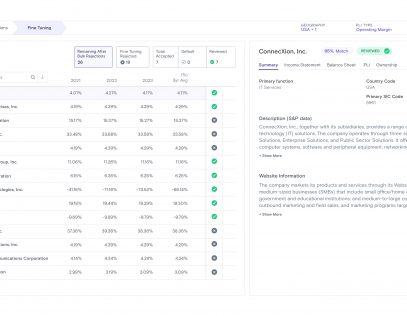On February 2, 2023, the OECD released the Administrative Guidance on the Pillar Two Global Anti-Base Erosion (GloBE) Rules. The OECD’s Pillar Two proposal is designed to ensure that large MNE groups are subject to a minimum effective tax rate of 15%, regardless of where they do business. For EU member states, the aim is that the GloBE rules are implemented into local legislation by the end of 2023. Local tax authorities, as well taxpayers, should prepare now for the new tax regime. Pillar Two is a complex solution and raises many questions. The 100-plus-page guidance attempts to clarify a range of GloBE Rules issues including: scope of rules, QDMTT, allocation of taxes arising under the blended CFC tax regime, income and taxes issues, and transition period or the approach for insurance companies.
Here’s what we’ve gleaned so far:
Scope of Rules: With regard to the scope of the rules, it is crucial to determine whether a MNE group qualifies for Pillar Two. The guidance explains the application of the deemed-consolidation test and how this will work in practice. This exercise should be performed by all MNEs to check if any further actions are required this year.
Qualified Domestic Minimum Top-up Tax (QDMTT): With regards to more technical issues, one of the key topics is the Qualified Domestic Minimum Top-up Tax (QDMTT), covered at the end of the guidance. There, you can check out details for the design of the QDMTT in line with the GloBE Rules. While analyzing the issue, remember that countries may apply the QDMTT even to groups that do not exceed the £750-million threshold.
Blended CFC Taxes: There have been a lot of questions regarding how to allocate GILTI, and the guidance provides a simplified allocation key in order to allocate the GILTI charges to the various entities. However, this simplified key will only apply for the few first years.
Income Tax Issues: the guidance also includes a discussion on the application of a top-up tax in the event of a net GloBE loss or a top-up tax percentage exceeding 15% due to a negative GloBE ETR. The optional excess negative tax expense administrative procedure has been also addressed. It’s worth mentioning that under that procedure, the taxpayer is able to avoid the immediate cash out and opt to defer the cash payments on excess negative tax expenses until these assets are actually used.
Asset Transfers: Another discussion point is asset transfers. Transactions and corporate restructurings resulting in the creation or increase of the asset’s carrying value by an MNE Group should be regarded as an asset transfer during the pre-GloBE period (since November 30, 2021). The guidance provides examples presenting the solutions for the potential issue of double taxation of such asset transfers.
The Administrative Guidance covers many technical issues relating to Pillar Two. It gives us significant additional information for the interpretation and operation of the GloBE Rules. It’s a valuable, essential component of the global minimum tax package. Companies must start preparing for the implementation of Pillar Two in the EU, and this new guidance may be a roadmap in doing so. And like every roadmap, we expect it will continue to evolve.









